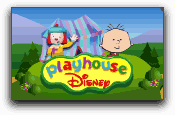11/09/03:
Video Game Simulations as a Cure for Phobias
 An
article,
Computer Games Can Treat Phobias, in the October
2003 issue of New Scientist magazine points out that
advances in computer graphic chips have enabled a level of virtual
reality that give video games new power. Citing a study conducted
at the University of Quebec, the article noted that confronting
one's fears was a common therapy for dealing with phobias. Previous
research had involved elaborate and expensive customized virtual
reality simulations. Apparently researchers have now discovered
that off-the-shelf games such as Half
Life and Unreal
Tournament can be used to create virtual environments
that train phobic people address their fears and potentially overcome
them. For example, Half Life was used to create an environment
where arachnophobes could be confronted with spiders and conditioned
to minimize those fears. An
article,
Computer Games Can Treat Phobias, in the October
2003 issue of New Scientist magazine points out that
advances in computer graphic chips have enabled a level of virtual
reality that give video games new power. Citing a study conducted
at the University of Quebec, the article noted that confronting
one's fears was a common therapy for dealing with phobias. Previous
research had involved elaborate and expensive customized virtual
reality simulations. Apparently researchers have now discovered
that off-the-shelf games such as Half
Life and Unreal
Tournament can be used to create virtual environments
that train phobic people address their fears and potentially overcome
them. For example, Half Life was used to create an environment
where arachnophobes could be confronted with spiders and conditioned
to minimize those fears. |
| Thursday,
November 13, 2003: Real World Physics
 When
checking out the Interactive
Physics page mentioned in an earlier blog, I ran across a
related page, Working
Model, from the same publisher that uses similar interactive
modeling for more practical applications. The program applies
physical principles to real-world mechanical systems and processes
as an aid to prototyping. It would appear that these same simulations
could also be used as training aids once a product or process
was refined and completed. When
checking out the Interactive
Physics page mentioned in an earlier blog, I ran across a
related page, Working
Model, from the same publisher that uses similar interactive
modeling for more practical applications. The program applies
physical principles to real-world mechanical systems and processes
as an aid to prototyping. It would appear that these same simulations
could also be used as training aids once a product or process
was refined and completed.
|
Saturday,
November 22, 2003: eLearning with Disney
 Not
surprisingly, Disney
Online has a graphically rich selection of "learning" games
for younger kids on their site. Actually, once you get through
the very commercial sections promoting the latest movies and theme
parks, these games and simulations seem to offer a nice variety
of creative activities for younger kids. There is also an overview
page
for grown-ups describing the activities. Some of these activities
include games about spelling, the alphabet, good manners, music,
playing with clay and more. They seemed to incorporate a lot of
interactivity - not just passive observation. While a few of them
had some tie-ins to Disney products, most of them did not. The
games I viewed seemed to load a bit slowly on my reasonably fast
computer with cable modem, which could cause problems with the
"short-attention-span" crowd. However, once a given activity or
game loaded up, the animations and response times were pretty
impressive. Not
surprisingly, Disney
Online has a graphically rich selection of "learning" games
for younger kids on their site. Actually, once you get through
the very commercial sections promoting the latest movies and theme
parks, these games and simulations seem to offer a nice variety
of creative activities for younger kids. There is also an overview
page
for grown-ups describing the activities. Some of these activities
include games about spelling, the alphabet, good manners, music,
playing with clay and more. They seemed to incorporate a lot of
interactivity - not just passive observation. While a few of them
had some tie-ins to Disney products, most of them did not. The
games I viewed seemed to load a bit slowly on my reasonably fast
computer with cable modem, which could cause problems with the
"short-attention-span" crowd. However, once a given activity or
game loaded up, the animations and response times were pretty
impressive.
|
Monday,
November 24, 2003: Tips for Becoming a Game Designer
In
an article
on the TechTV
website, Paul Reiche III, a game designer at Crystal Dynamics
provides a series of tips and a "course catalogue" for would-be
game designers. Not surprisingly, he points out that game design
is a "mongrel discipline" that involves a broad range of skills.
While most designers have a core skill like programming, art or
writing, most have dabbled in many areas. In addition to programming,
art and writing, valuable  competencies
include math, science and history. He also provides a list of
the programs most commonly used in game design. competencies
include math, science and history. He also provides a list of
the programs most commonly used in game design. |
|
Saturday,
November 29, 2003: Vote for Your Favorite Video Game
Spike TV is
presenting the 1st Annual Video Game Awards scheduled to air on
Thursday December 4 at 9PM ET/PT. You can even vote for your favorite
games in a number of categories. While the competition includes
categories for online games, PC games, handheld games and many
others; sadly, it does not include a category for educational
games. The web site itself might win an award for an annoying
use of Flash, but it does have clips from a number of games that
might be fodder for ideas about what's popular among game players.
|
|
Sunday,
November 30, 2003: Board
Games' Enduring Appeal
While
the toy business in general is not doing especially well, BusinessWeek
reports in a November
24 article, that board games are one of the few bright spots.
The overall board-games category is up 10% so far this year and
toymaker Hasbro reports sales up 50% in that area. Two former
Microsoft executives stumbled upon this trend a few years back
when they were looking for a new business idea. With some funding
from Amazon and Starbucks, they came up with Cranium, a family
game that included a bit of spelling, drawing, trivia and charades.
Apparently their timing was great and Seattle has become a hot
area for game development (maybe it's all of the rain...).
Industry
insiders have attributed the popularity to a number of factors
- everything from 9/11 creating a "nesting" instinct
to the increasing appeal of "game nights" as inspired
by that recurring theme on the TV show Will & Grace to a desire
to return to simpler times or seek cost effective entertainment.
Some
of the new breed of games includes an electronic component but
others are still simple games that require no batteries or electricity.
Although big toymakers dominate the field, this appears to be
one area where small game publishers have a chance. Several reported
success with relatively small investments and limited advertising.

|
Last
updated
Sunday, November 30, 2003 9:36 AM
|

